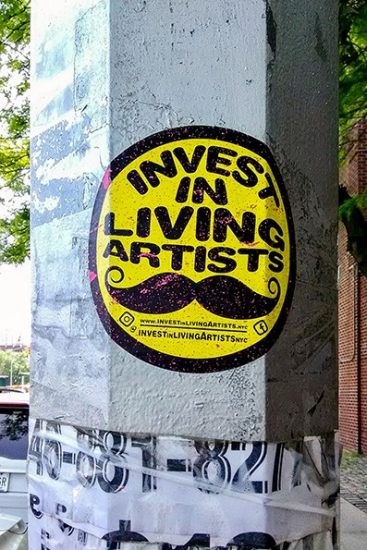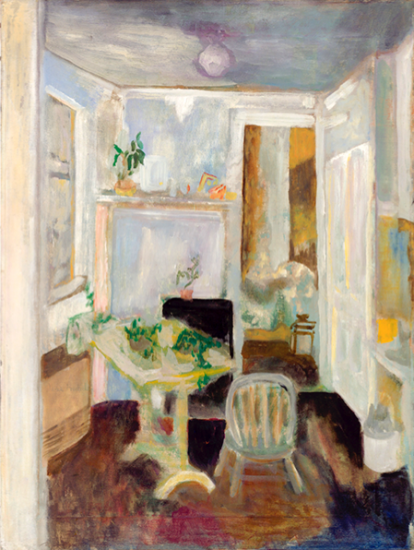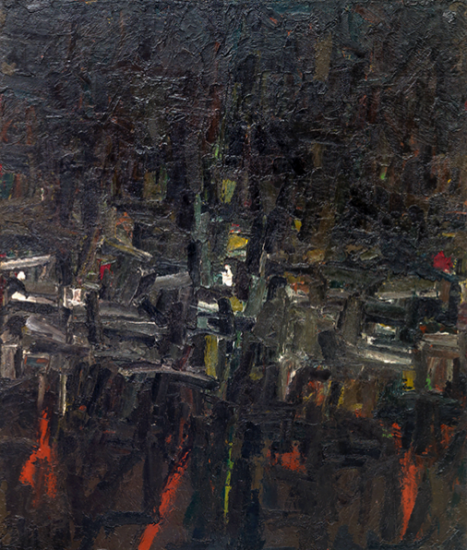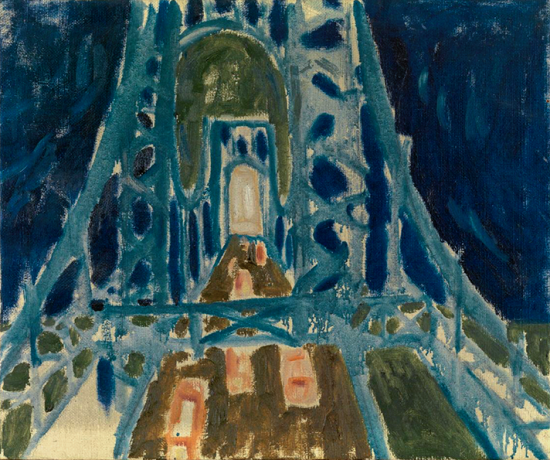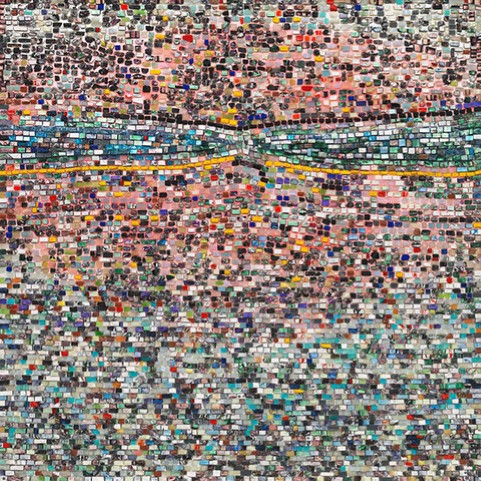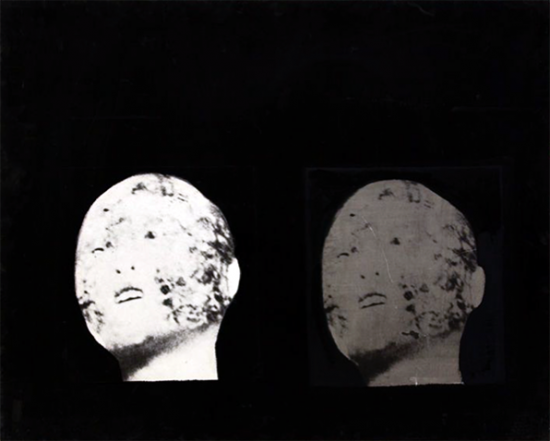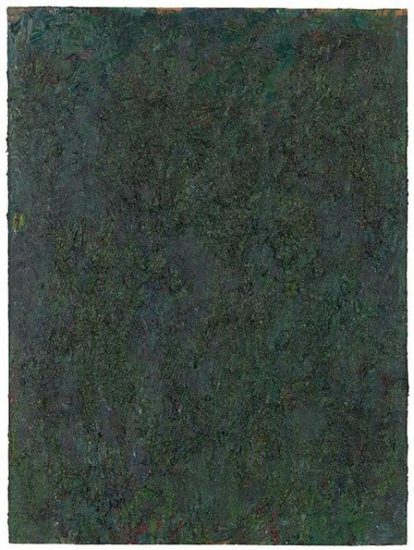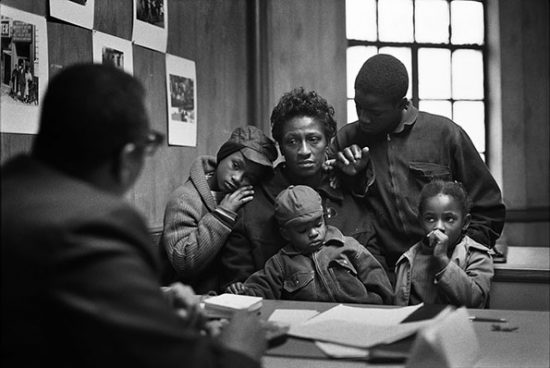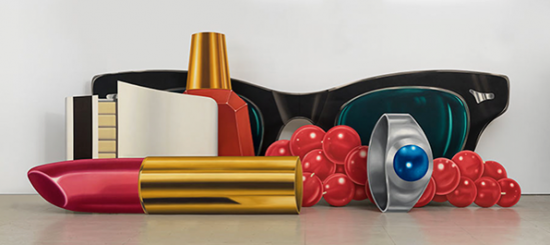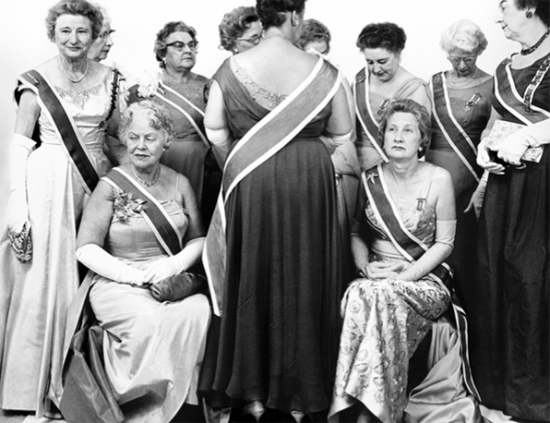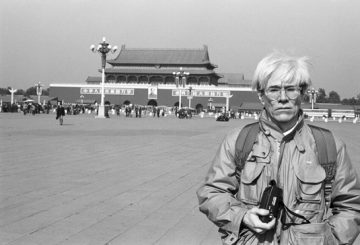George Shaw on those artists who refuse to stay dead…
Not long after my wife and I returned to New York in 2017, I found myself falling back into the groove of some old routines. Two patterns quickly re-emerged: the almost daily marathon walks to observe and photograph the city, and the insistent visits to art galleries. As a city made for walking, New York’s gridded streets make it hard for even the vaguest airhead to get lost, and there are very few city blocks bereft of some form of interest, whether obvious or obscure. With hundreds of galleries and museums spread throughout the city’s five boroughs, it made sense to pick up where I’d left off. One of the first things I began to notice at street level were stickers that read, “Invest in Living Artists” slapped on walls, street signs, and telephone poles. It was an interesting exhortation I hadn’t considered so concretely before, but that suddenly made me question why dead artists would be considered such a threat.
The exhaustive and exhausting rounds of gallery visits are driven by the opportunity to see new work and find new artists, especially those with evolving, productive careers. I choose to spend my time in contemporary art galleries because when viewing art, my preference is to see work that interprets today’s cultural and political conditions, or explores personal circumstances perhaps influenced by the times. As the operative word in the ‘__art gallery’ assignation, the word ‘contemporary’ is defined by the Oxford Dictionary as “belonging to or occurring in the present.” However, about six months ago, I began to take notice of the many exhibitions I was seeing by artists who have been gone 10, 20, or 30 years. Work from the 50s, 60s, 70s, and 80s is routinely bestowed significant time and space in many gallery programs in art precincts like the Lower East Side – known for its ‘cutting edginess’ – and Chelsea, about twelve blocks of well-funded galleries showing more established artists, including those who sit at the pointy end. And if it’s pointy, I’d like it to be sharp. So how would you feel being confronted by an exhibition of art from the Middle Ages when visiting a gallery that you associate with work that’s generally sharp as tacks? How about eleven muted and dated paintings in the show Al Held in Paris: 1952-1953, at a downtown gallery whose artists almost always surprise from the moment the lift door opens?
Jane Freilicher, Interior, 1954
Al Held, Untitled, 1952-53
Allan Kaprow, George Washington Bridge (front view), 1955
This is a (very) partial list of deceased artists who have had solo shows in contemporary art galleries in the past six months: Allan Kaprow (1927-2006), Arshile Gorky (1904-1948), Milton Resnick (1917-2004), Ad Reinhardt (1913-1967), Louise Nevelson (1899-1988), Jane Freilicher (1924-2014), Jason Rhoades (1965-2006), Antonio Lopez (1943-1987), Peter Hujar (1934-1987), Gordon Parks (1912-2006), Rudolph Baranik (1920-1998), Alexander Calder (1898-1976), Robert Mapplethorpe (1946-1989), Martin Kippenberger (1953-1997), August Sander (1876-1964), Cy Twombly (1928-2011), Mark Rothko (1903-1970), David Smith (1905-1965), and Tom Wesselman (1931-2004). In the last week, I’ve been to shows by Eduardo Chillida (1924-2002), Alan Shields (1944-2005), Rudie Berkhout (1946-2008), and an Alberto Giacometti (1901-1966)/Cy Twombly/Franz West (1947-2012) group trifecta. A few considerations might be helpful. The simultaneous, solo Twombly shows across two sites coincided with a new catalogue raisonne of drawings. An Arlene Godfrey (1950-2017) show was a career celebration after her death months earlier. Memorial shows were also staged for Barkley Hendricks (1945-2017) and Charles McGill (1964-2017). To honour Jack Whitten (1939-2017), the only object adorning the gallery was his last painting. When speaking to gallery staff about the reasons for these shows, I’ve been told variously, “It’s important for new generations to know what’s gone on before them” or “We are complementing a show at the Metropolitan/MoMA/Whitney” or “We had a sudden change in the program.” In the instance of the Middle Ages show, the gallerist said, “The collection belongs to a friend of the owners and he wanted to show it in New York.” For six weeks.
Jack Whitten, Quantum Wall, VIII (For Arshile Gorky, My First Love in Painting), 2017
Rudolph Baranik, Napalm Elegy TH, 1971
Milton Resnick, Untitled, 1982
I’m not out to bury the dead; let them live, I say. In my view, the question is not so much about ‘why,’ but rather more about ‘where.’ I understand the commercial imperatives of art galleries and their representation of late artists’ estates, as well as their fiscal responsibility to promote those artists as commercially viable entities. Just because artists are no longer around doesn’t mean they can’t still contribute – ask the estates of Andy Warhol and Jean-Michel Basquiat. Fortuitously for anyone interested in contemporary art of the past, there are art galleries specifically dedicated to showing ‘modern’ or ‘historical’ artists alongside contemporary practitioners. There is also a slew of galleries, particularly those focused on photography, whose charter is to explore the photo-historical gamut while showing today’s photomedia artists side-by-side. Many downtown galleries also have additional exhibition spaces in the Upper East Side that, for the most part, exhibit established artists among whom can often be found some of yesterday’s trailblazers. Art foundations; art centres; national, state, and city museums; private museums; cultural organisations; secondary market dealers; and art funds also routinely share and promote historical and contemporary art. For those with a Kryptonite American Express Card, and who may want to own a bit of history, there are regularly staged, impressive, informative, and often specially curated exhibitions ahead of gavel-gazing auctions.
Gordon Parks, The Fontanelles at the Poverty Board, Harlem, 1967
Tom Wesselman, Still Life #60, 1973
Richard Avedon, The Generals of the Daughters of the American Revolution, DAR Convention, Mayflower Hotel, Washington DC, October 15, 1963
I have only ever stormed out of an exhibition once – it was that bad. Art will always hold my attention. If there is work in front of me, I will give it my time: the good, the bad, and the ugly. The new, old, and ancient. Whether it’s by someone young, old, or dead. I am always happy to discover and broaden my horizons. So, if I want an art history lesson or a trip down memory lane, I take the bus to one of the many venues outlined earlier instead of walking to the gallery where I last saw a show about what it’s like to be queer and black in a predominantly white system. “Invest in living artists?” Sure. But why not take it a step further and exhort, “Live and let live” instead. Because in a city like New York, there’s plenty of room for everyone, above and underground.
